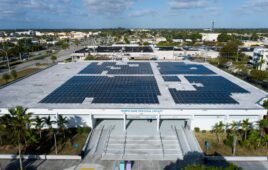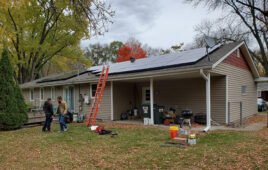On Dec. 20, the Georgia Public Service Commission (PSC) voted on a final order in the Georgia Power Company (GPC) rate case. The order fails to expand the successful rooftop solar pilot program that the PSC created in 2020. Instead, the PSC adopted GPC’s anti-solar proposals to retain an instantaneous netting structure and impose a much higher and unjustified $100 interconnection fee for new solar customers, while approving a rate increase across the board for all ratepayers.
Rooftop solar customers will see a temporary increase in the credit they receive for exported generation at a rate only slightly above the avoided cost for GPC, but the order fails to take steps necessary to support Georgia’s lagging rooftop solar market.
“We know that GPC will continue to fight fair compensation rates for rooftop solar, but we are particularly disappointed that the PSC let them get away with it,” said Kevin Lucas, senior director of utility regulation and policy for the Solar Energy Industries Association (SEIA). “The Commissioners had all the information and data they needed to expand the pilot monthly netting program and spur Georgia’s rooftop solar market, but they simply chose not to do so. Frustratingly, the PSC’s failure to expand the pilot program and only offer a temporary increase for exported energy will keep the state’s rooftop solar sector mired at the bottom of the national rankings.”
SEIA intervened in this case alongside Vote Solar and the Georgia Solar Energy Industries Association (GASEIA). The coalition’s joint comments include analysis showing how customers could have saved money under a different rate structure.
“The PSC’s small and temporary increase for exported rooftop solar energy will not encourage any economic development in the Georgia rooftop solar market,” said Allison Kvien, Southeast Regulatory Director at Vote Solar. “Policymakers should be working to expand solar access, not stifle it. As we begin a new legislative session in a few short weeks, we’ll be looking to state legislators to take real action and make Georgia a place where people have the ability and the real, economic option to manage their energy bills through rooftop solar adoption.”
“The solar industry is disappointed in the elected members of the PSC for not representing the voice and the needs of Georgia ratepayers during these extraordinary economic times,” said Thatcher Young, GASEIA board member and vice president of business development at Velo Solar. “The monthly netting pilot saw a 300% increase in new rooftop solar applications in under 12 months during a global pandemic, and clearly demonstrates what customers are looking for in the market. However, instead of a modest expansion, new solar customers will now pay more and get less. As is often the case with the PSC, this decision demonstrates the strength of GPC’s influence over the voices of its customers.”
SEIA, Vote Solar and GASEIA will continue to advocate for regulatory and statutory changes that ensure the PSC strengthens its oversight of utilities to prevent over-collection from ratepayers and empower customer choice.
News item from SEIA





” Instead, the PSC adopted GPC’s anti-solar proposals to retain an instantaneous netting structure and impose a much higher and unjustified $100 interconnection fee for new solar customers, while approving a rate increase across the board for all ratepayers.”
The State of Georgia has a reputation of being ‘punitive’ to the concept of distributed energy generation resources owned by the ratepayers on their homes. Some of the early adopters in Georgia actually installed solar PV systems that use solar PV and battery storage in an (off grid) system that takes receptacles, lights, ceiling fans and put these in a secondary house circuit breaker panel that is separate and not comingled with the utility grid of the house. An automatic or manual transfer switch with a break before make switch could take the main C.B. and bridge the off grid system if and or when the solar PV and ESS system needs repair or maintenance. Taking a 2,500 square foot home and making the energy use look like a 500 square foot bungalo sends a strong message to the utility. Then one doesn’t need a “connection fee” to the utility, they just don’t need all the energy to their home supplied by the utility without penalty or usury per kWh supplied.